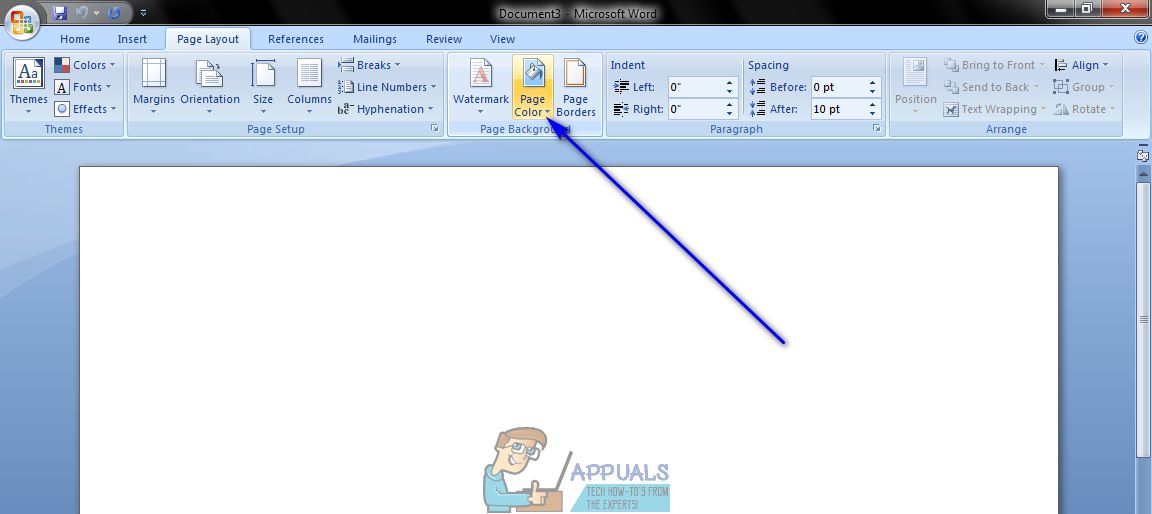

- #CHANGE MICROSOFT WORD COLOR THEME INSTALL#
- #CHANGE MICROSOFT WORD COLOR THEME CODE#
- #CHANGE MICROSOFT WORD COLOR THEME WINDOWS 8#
Note, this is normally different from the default save location for custom templates.Ĭharles Kenyon, thank you for assisting me. To change the location of the User Templates folder to make it version specific. The solution to this is to use Options > Advanced > File Locations You will be if you have multiple versions of Word and they are sharing a normal template. You may be working in compatibility mode.

Like I showed above, even when opening the template, while choosing for colors, although the name reads as Office, yet it was showing outdated 2010 color scheme.įirst, the 2010 is not outdated, it is different. Yes, that's contrary to what you must do to open templates in other folders, where double clicking creates a new file based on the template and right clicking on the file name and then left clicking Open opens the template. Once done, I closed word after saving the normal.dotm template but the color scheme remains unchanged when I re-opened a normal doc. Go under Design tab » Colors and set to.Once the doc is opened, press space and backspace just to dirty the document.Right-clicking Normal.dotm » Open with left-click.See the screenshot of the directory īut you can fix the palette for all new files by modifying normal.dotm as I suggested in an earlier post.Ĭan you tell me how exactly? Because here's what I did (based from what I read in the previous posts): There seems to be no duplicate of normal.dotm as you are implying. I tried the solution but nothing seems to have changed. Moreover, the normal.dotm date corresponds to the date the O2016 was installed, not the O2013. I first installed O2013 but the color palette was 2010! Further before installing O2016, I'd had completely uninstall the 2013 version instead of upgrading.
#CHANGE MICROSOFT WORD COLOR THEME WINDOWS 8#
Well this is a fresh installation of Windows 8 and there was no previous version of Office on it. If you want to keep both versions loaded, you'll have to live with that (and with all new W2016 documents being created in Word kept the normal.dotm from your W2010/2013 version instead of replacing it with a W2016 version. We hope that you'll explore the other customization options in the Options dialog box, to truly make Visual Studio your own.I can tell you why. We explored just a couple ways of customizing the colors in Visual Studio.
#CHANGE MICROSOFT WORD COLOR THEME CODE#
If you open another file type, such as a C++ or C# code file, you'll see that the line numbers also appear in the olive color. The line numbers are now an olive color, and the XML attributes are a bright, lime green. Choose OK to save our selections and close the dialog box. In the Display items list, scroll down to XML Attribute and select it. If you are a C++ developer and you want to change the color used for functions, for example, you can look for C++ Functions in the Display items list.īefore we exit out of the dialog box, let's also change the color of XML attributes. Some languages have their own specific fonts and colors settings. In the Item foreground box, choose Olive. To change the color of the line numbers text, in the Display items list, choose Line Number. Expand the drop-down list just to see the extensive list of places where you can customize fonts and text color. Notice that the text under Show settings for says Text Editor-this is what we want. Under Environment, choose the Fonts and Colors category. To open the Options dialog box, choose Tools > Options from the menu bar. We're going to change the text color for these items. Notice that the line numbers are a turquoise-blue color, and the XML attributes (such as id="bk101") are a light blue color. Sorceress, and her own childhood to become queen of the world. Īn in-depth look at creating applications with XML.Ī former architect battles corporate zombies, an evil Paste the following XML below the line that contains. In the New File dialog box, under the General category, choose XML File, and then choose Open. First, let's create a new XML file to see the default colors.įrom the menu bar, choose File > New > File. Now we'll customize some text colors for the editor.
#CHANGE MICROSOFT WORD COLOR THEME INSTALL#
After you install this tool, additional color themes appear in the Color theme drop-down list. You can install additional predefined themes by installing the Visual Studio Color Theme Editor from the Visual Studio Marketplace.


 0 kommentar(er)
0 kommentar(er)
